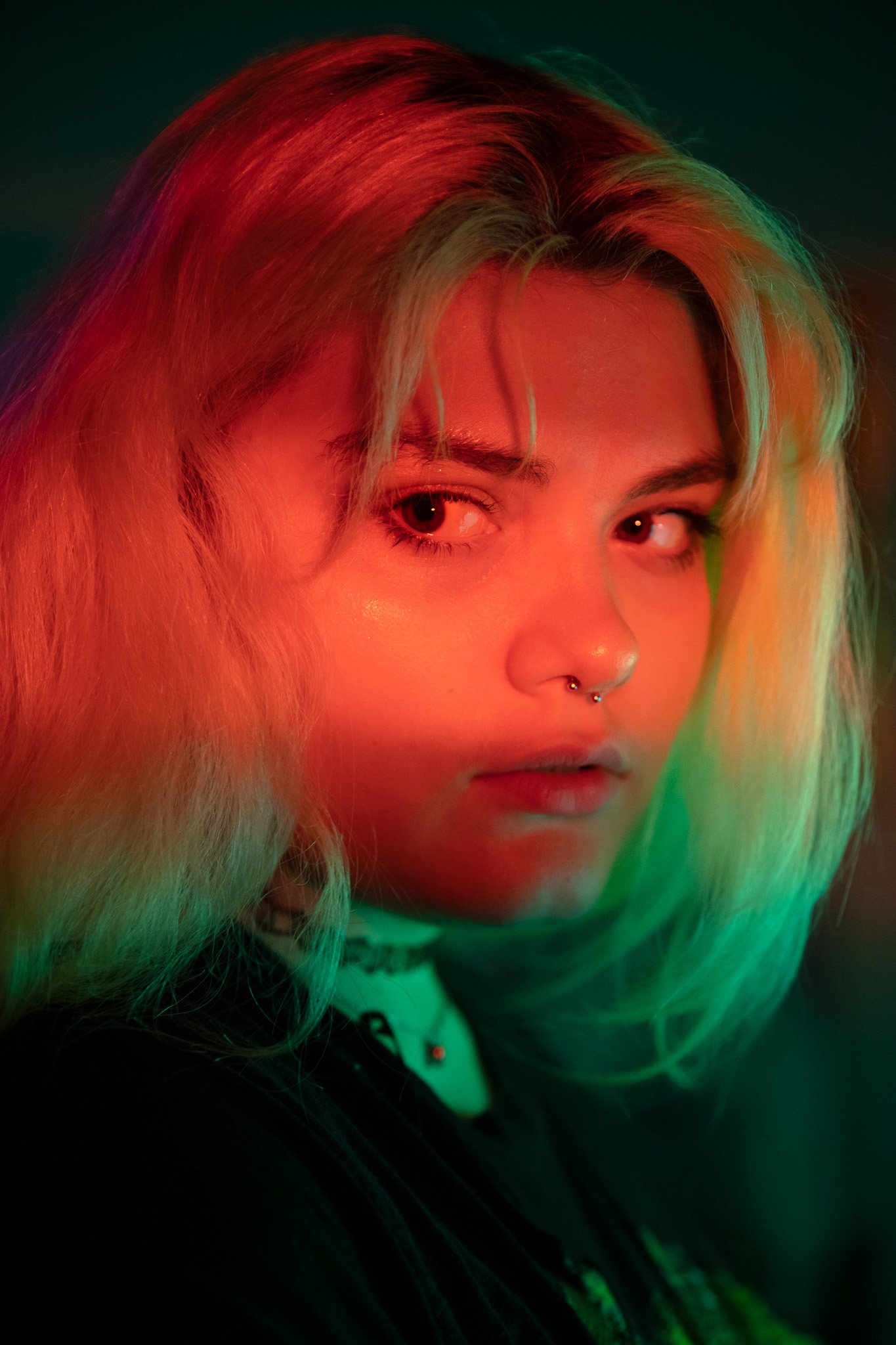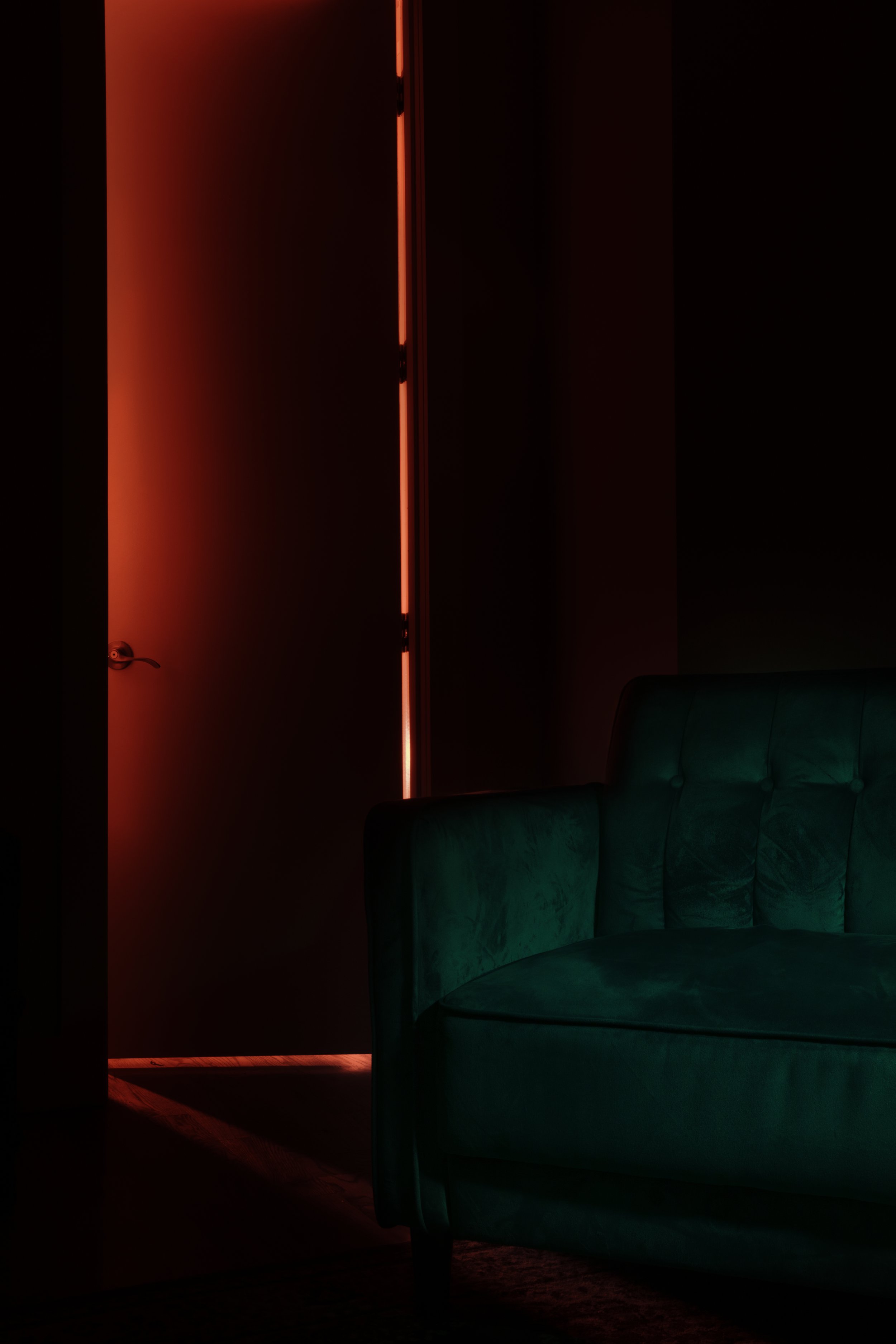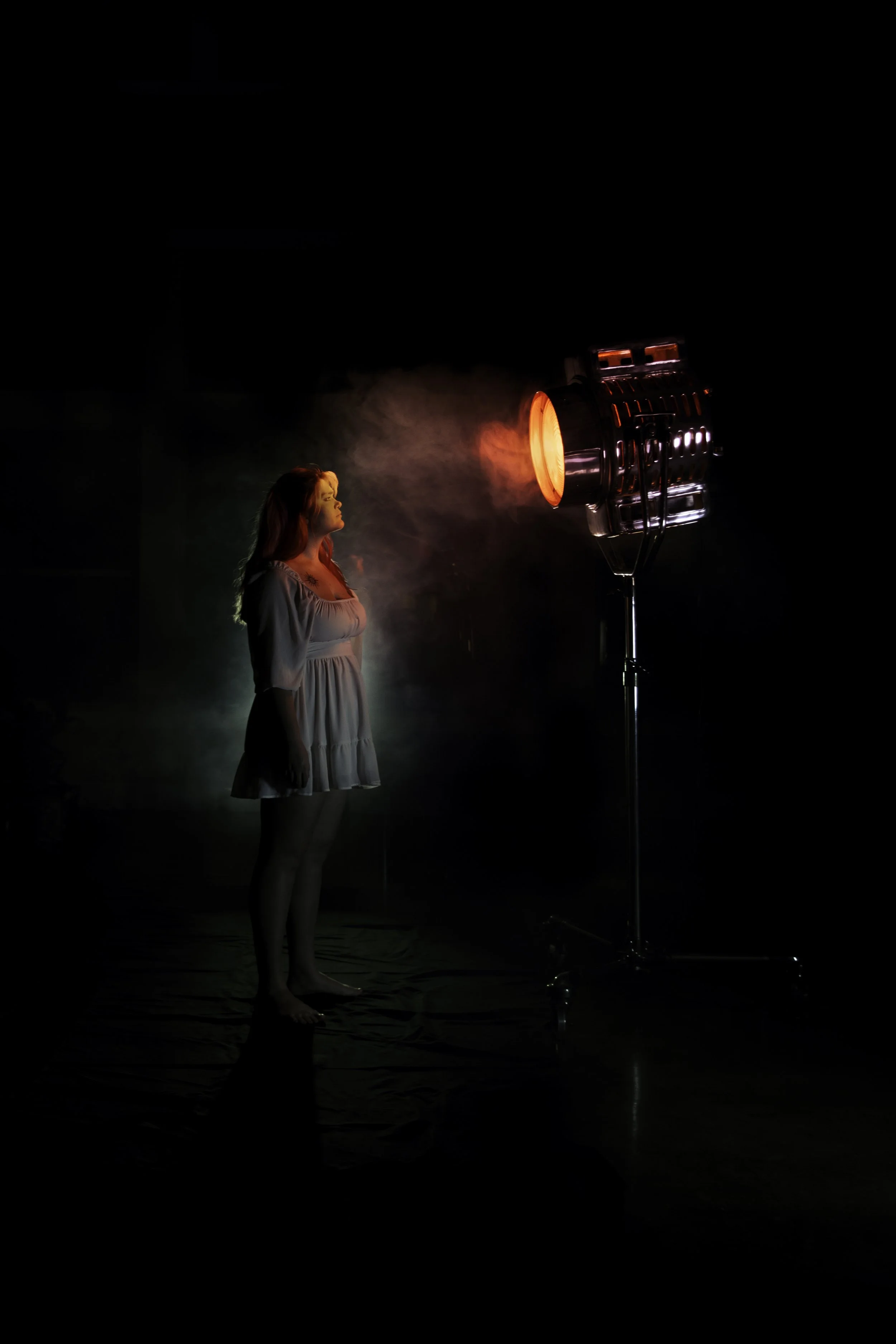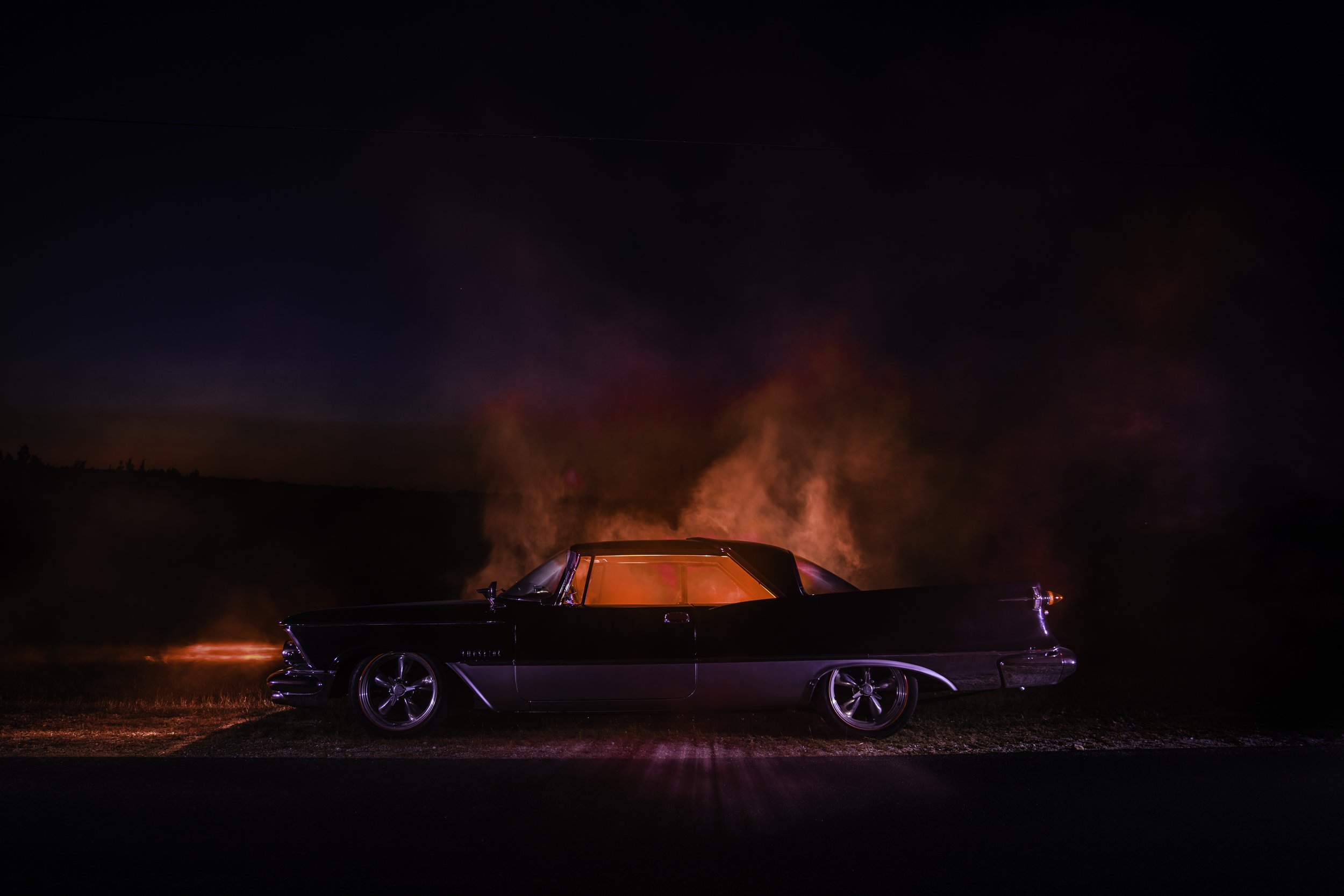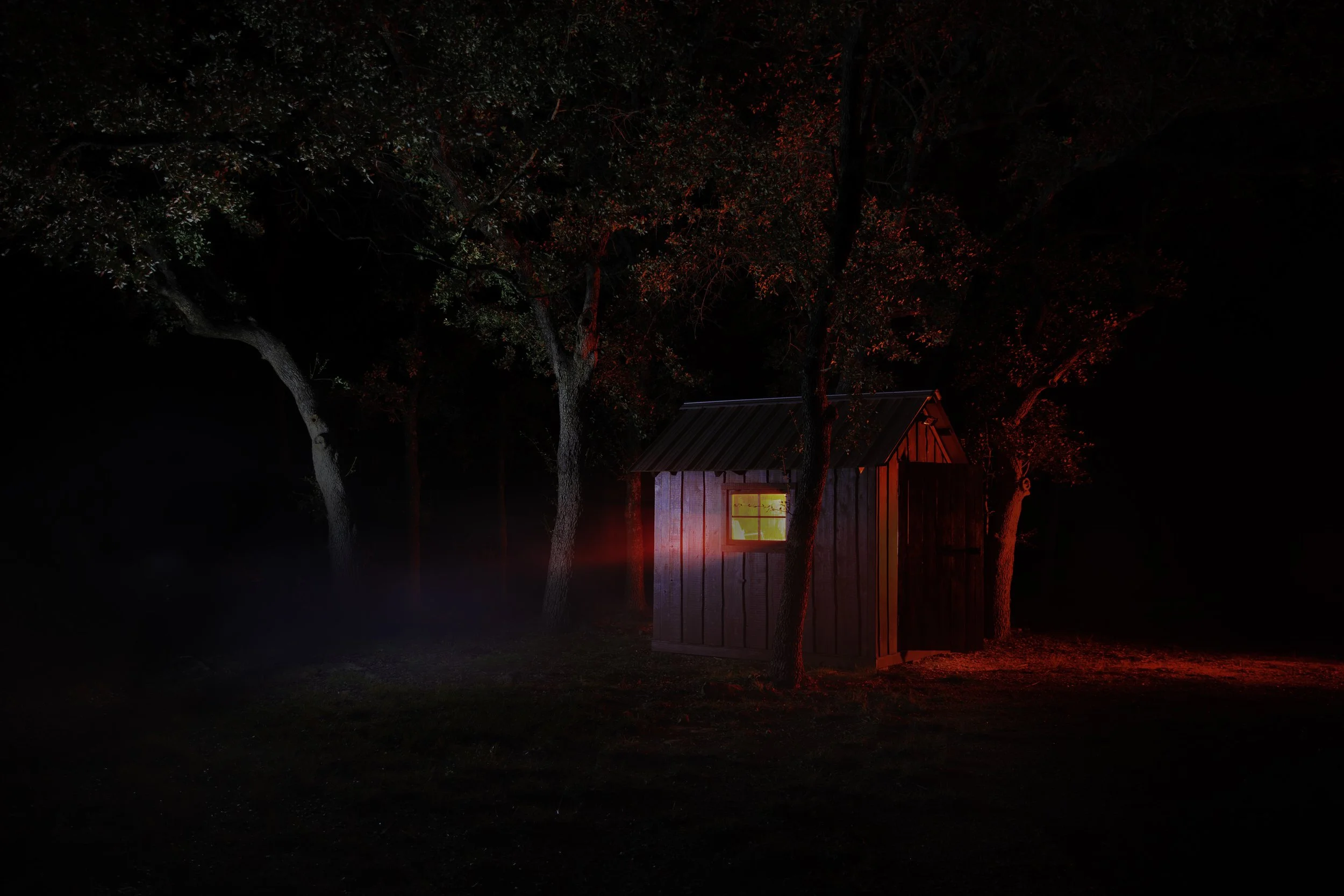Horror is the Promise Fulfilled
When does horror begin? Is it in the moments when the killer raises his knife, when it begins its trajectory downward? Or is it the moment he decides that someone needs to die? Maybe the horror is not in the killer at all. Maybe horror begins in the heart of his victim, who knows that she is going to die. Maybe horror begins with us, the spectator.
For my year-long thesis project, Horror is the Promise Fulfilled, I’m reexamining my experiences with familial abuse through the lens of the horror genre. Classic Hollywood horror has always been a source of comfort for me, and by using the tropes, imagery, and techniques of horror filmmaking, I was able to set the tone of my work with a visual reference that is widely accessible while discussing something very personal.
My work is highly produced and controlled because my trauma was not. Abuse is chaotic and unpredictable, and as a survivor, it was important to me to reclaim control over my experiences. In several of my pieces, my abuser is symbolized by the color red. This gives implication of his proximity without a physical appearance this is my way of asserting his presence in the work without allowing him any power over it. The protagonist of my work is often indicated with cooler colors, and shot with the suggestion of vulnerability. In my piece Final Girl, I utilize wide-open space with little to separate the character of the Final Girl from the impending danger of the surrounding negative space. In Stand Off (My Brother And I), the two characters come face-to-face, reminiscent of the third-act showdown between hero and villain.
When people see my work, I want them to consider its aftermath. When the Final Girl is finally free from her terrorizer, when she no longer has to fight for her life, what does she do? She has seen Horror, has looked it in the face and survived, but the hard part isn’t over yet. This is the question my work poses: what becomes of the Final Girl?
